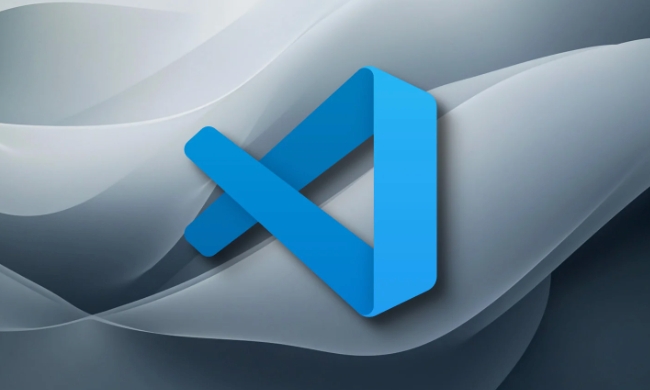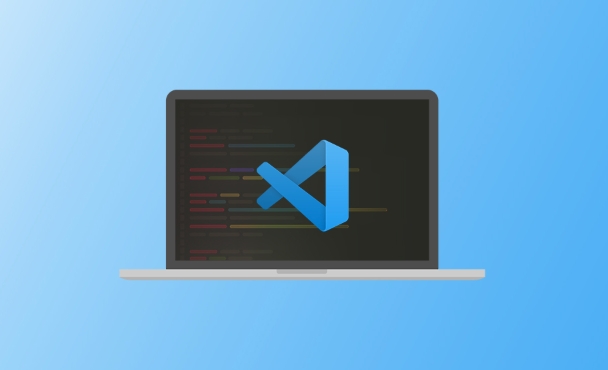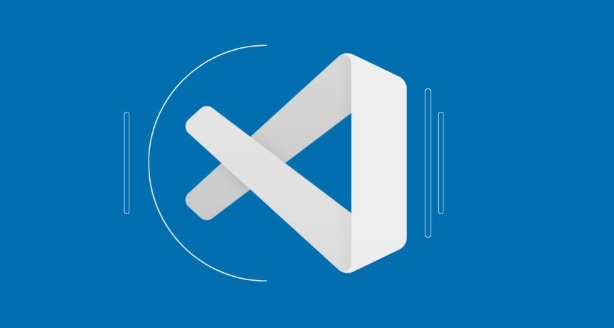In VSCode, you can associate the terminal configuration file with the user profile by configuring the settings.json file. The specific steps are: 1. Understand the configuration file structure and make it clear that each profile can independently set the terminal type; 2. Set the terminal.integrated.defaultProfile field in the settings.json corresponding to the profile to specify the default terminal, and define the path and parameters of each terminal in terminal.integrated.profiles; 3. If the front-end project uses zsh and the back-end project uses bash, different terminals can be set for two profiles respectively; 4. Quickly switch the profile through the command panel or shortcut keys to achieve automatic terminal matching.

In VSCode, you can associate the terminal profiles with the editor's user profiles (Profiles) to implement different terminal settings under different configuration files. This is useful when dealing with multiple projects, environments, or when you need to distinguish development toolchains.

Here is how to operate it in detail:
1. Understand the configuration file structure of VSCode
VSCode supports multi-user configuration (also called "Profiles"), and each configuration file can have independent settings, extensions, and terminal configurations. The terminal configuration file defines the shell and its parameters you use in the terminal.

To make them linked, the key is to modify the settings.json file under each Profile and specify the default terminal type or shell path.
2. Configure the terminal profile and bind to the VSCode user profile
The steps are as follows:
- Open VSCode settings (you can enter
Preferences: Open Settings (UI)through the command panel) - Switch to the Profile you are currently using
- Go to "Terminal > Integrated > Default Profile" and select the terminal type you want the Profile to use (such as bash, zsh, PowerShell, etc.)
Or manually edit the settings.json file and add something like the following:

"terminal.integrated.defaultProfile": "bash"
Note:
"bash"here must be a name you defined interminal.integrated.profilesofsettings.json.
If you haven't defined your own terminal profiles, you can add them in settings.json :
"terminal.integrated.profiles": {
"bash": {
"path": "bash",
"args": ["--login"]
},
"zsh": {
"path": "zsh"
}
}In this way, each VSCode Profile can use a different terminal shell.
3. Suggestions for practical application scenarios
For example, you have two development tasks:
- One is a front-end project, using Node.js zsh
- One is a backend project, based on Python bash
You can create two VSCode Profiles for these two tasks:
-
settings.jsonof the front-end profile sets to zsh - Backend Profile Set the default terminal to bash
Every time you switch the Profile, the terminal will automatically match the corresponding shell, saving you the hassle of manual switching.
4. Tips: How to quickly switch Profiles?
You can quickly Profiles: Switch Profile used in the current workspace through the command panel (Ctrl Shift P or Cmd Shift P).
In addition, you can also bind the switching command to shortcut keys to facilitate frequent switching.
Basically that's it. As long as you understand the relationship between Profile and terminal configuration and correctly set defaultProfile and profiles fields, you can easily achieve linkage between the two.
The above is the detailed content of How to link terminal profiles with VSCode profiles?. For more information, please follow other related articles on the PHP Chinese website!

Hot AI Tools

Undress AI Tool
Undress images for free

Undresser.AI Undress
AI-powered app for creating realistic nude photos

AI Clothes Remover
Online AI tool for removing clothes from photos.

Clothoff.io
AI clothes remover

Video Face Swap
Swap faces in any video effortlessly with our completely free AI face swap tool!

Hot Article

Hot Tools

Notepad++7.3.1
Easy-to-use and free code editor

SublimeText3 Chinese version
Chinese version, very easy to use

Zend Studio 13.0.1
Powerful PHP integrated development environment

Dreamweaver CS6
Visual web development tools

SublimeText3 Mac version
God-level code editing software (SublimeText3)
 Fixing 'Timed out waiting for the debugger to attach' in VSCode
Jul 08, 2025 am 01:26 AM
Fixing 'Timed out waiting for the debugger to attach' in VSCode
Jul 08, 2025 am 01:26 AM
When the "Timedoutwaitingforthedebuggertoattach" issue occurs, it is usually because the connection is not established correctly in the debugging process. 1. Check whether the launch.json configuration is correct, ensure that the request type is launch or attach and there is no spelling error; 2. Confirm whether the debugger is waiting for the debugger to connect, and add debugpy.wait_for_attach() and other mechanisms; 3. Check whether the port is occupied or firewall restricted, and replace the port or close the occupied process if necessary; 4. Confirm that the port mapping and access permissions are configured correctly in a remote or container environment; 5. Update VSCode, plug-in and debug library versions to solve potential
 What are VS Code workspaces, and how are they used?
Jul 10, 2025 pm 12:33 PM
What are VS Code workspaces, and how are they used?
Jul 10, 2025 pm 12:33 PM
VSCode workspace is a .code-workspace file that saves project-specific configurations. 1. It supports multi-root directory, debug configuration, shortcut key settings and extension recommendations, and is suitable for managing different needs of multiple projects. 2. The main scenarios include multi-project collaboration, customized development environment and team sharing configuration. 3. The creation method is to save the configuration through the menu File>SaveWorkspaceAs.... 4. Notes include distinguishing between .code-workspace and .vscode/settings.json, using relative paths, and avoiding storing sensitive information.
 Where is the vscode settings.json file located?
Jul 14, 2025 am 01:21 AM
Where is the vscode settings.json file located?
Jul 14, 2025 am 01:21 AM
To access the settings.json file of VSCode, you can directly open it through the command panel (Ctrl Shift P or Cmd Shift P). The default storage location of the file varies according to the operating system. Windows is in %APPDATA%\Code\User\settings.json, macOS is in $HOME/Library/ApplicationSupport/Code/User/settings.json, Linux is in $HOME/.config/Code/User/
 How to set environment variables for debugging in vscode settings?
Jul 10, 2025 pm 01:14 PM
How to set environment variables for debugging in vscode settings?
Jul 10, 2025 pm 01:14 PM
To set debug environment variables in VSCode, you need to use the "environment" array configuration in the launch.json file. The specific steps are as follows: 1. Add "environment" array to the debugging configuration of launch.json, and define variables in key-value pairs, such as API_ENDPOINT and DEBUG_MODE; 2. You can load variables through .env files to improve management efficiency, and use envFile to specify file paths in launch.json; 3. If you need to overwrite the system or terminal variables, you can directly redefine them in launch.json; 4. Note that
 How can I improve VS Code performance on Linux by changing file watcher settings?
Jul 13, 2025 am 12:38 AM
How can I improve VS Code performance on Linux by changing file watcher settings?
Jul 13, 2025 am 12:38 AM
ToimproveVSCodeperformanceonLinux,adjustinotifylimitsandconfigurefilewatcherexclusions.First,increasesystem-levelinotifylimitsbyeditingsysctl.confandaddingfs.inotify.max_user_watches=524288,fs.inotify.max_queued_events=65536,andfs.inotify.max_user_in
 How do I use environment variables in VS Code tasks?
Jul 07, 2025 am 12:59 AM
How do I use environment variables in VS Code tasks?
Jul 07, 2025 am 12:59 AM
YoucanuseenvironmentvariablesinVSCodetasksviathe${env:VARIABLE_NAME}syntax.1.Referencevariablesdirectlyintasks.jsontoavoidhardcodingsensitivedataormachine-specificvalues.2.Providedefaultvalueswith"${env:VARIABLE_NAME:-default_value}"topreve
 How to debug inside a Docker container with VSCode?
Jul 10, 2025 pm 12:40 PM
How to debug inside a Docker container with VSCode?
Jul 10, 2025 pm 12:40 PM
The key to debugging code with VSCode in Docker containers is to configure the development environment and connection methods. 1. Prepare a mirror with development tools, install necessary dependencies such as debugpy or node, and use the official devcontainers image to simplify configuration; 2. Mount the source code and enable the Remote-Containers plug-in, create .devcontainer folders and configuration files, and realize in-container development; 3. Configure the debugger, add debug settings for the corresponding language in launch.json, and enable the listening port in the code; 4. Solve common problems, such as exposing the debug port, ensuring the host is 0.0.0.0, and use postCreateC
 How to change just the background color of a VS Code theme?
Jul 08, 2025 am 01:04 AM
How to change just the background color of a VS Code theme?
Jul 08, 2025 am 01:04 AM
To change the background color of the VSCode theme, use the workbench.colorCustomizations setting. The specific steps are as follows: 1. Open the settings and search for "ColorCustomizations", click "Editinsettings.json"; 2. Add the "workbench.colorCustomizations" configuration item, and set such as "editor.background":"#1e2923" to change the editor background; 3. If you want to modify the sidebar, panel and status bar background, you can add






